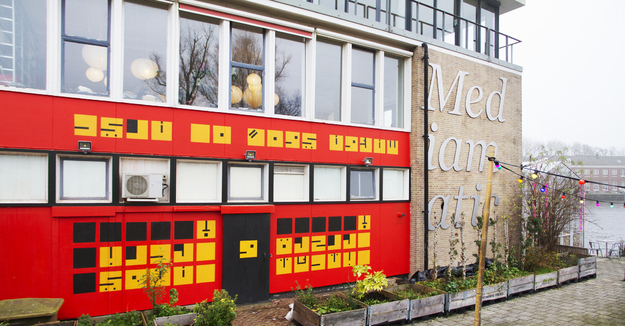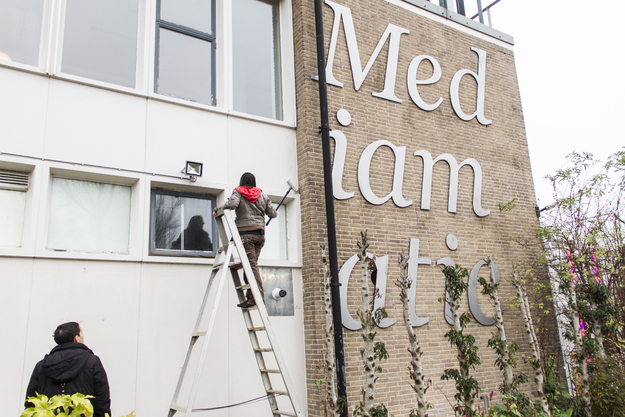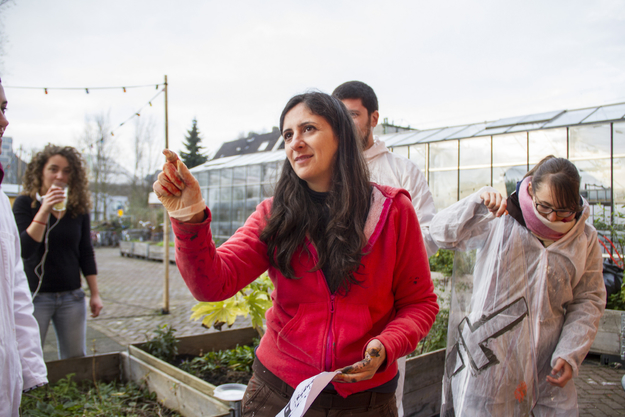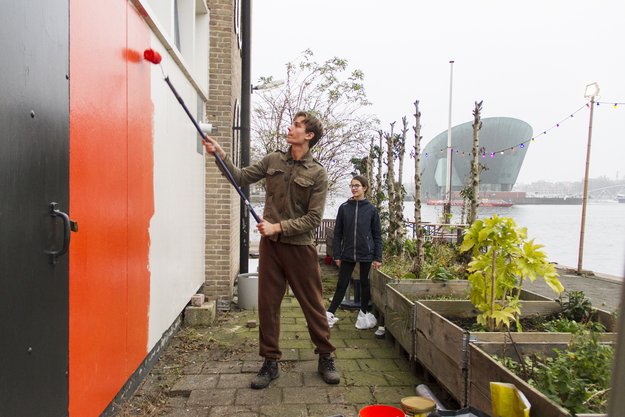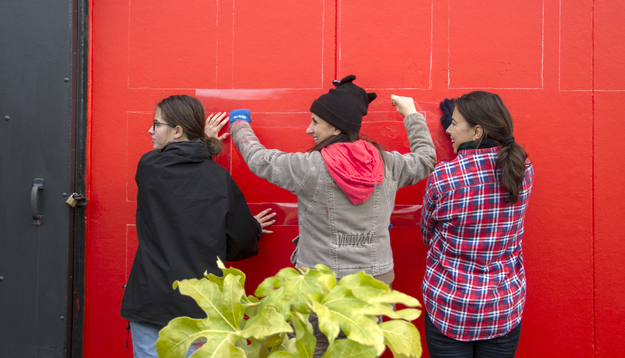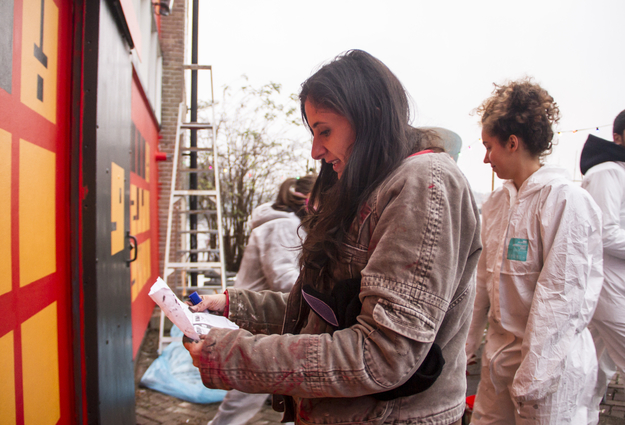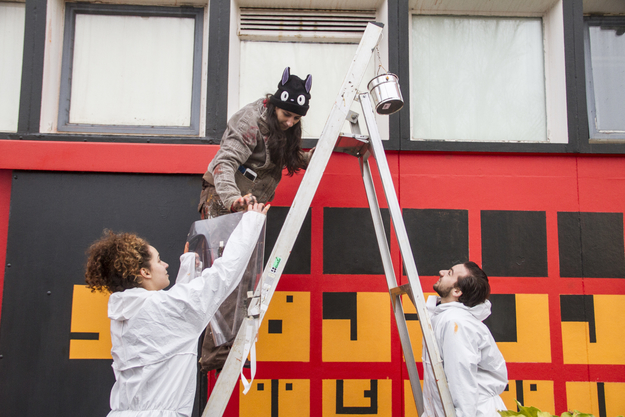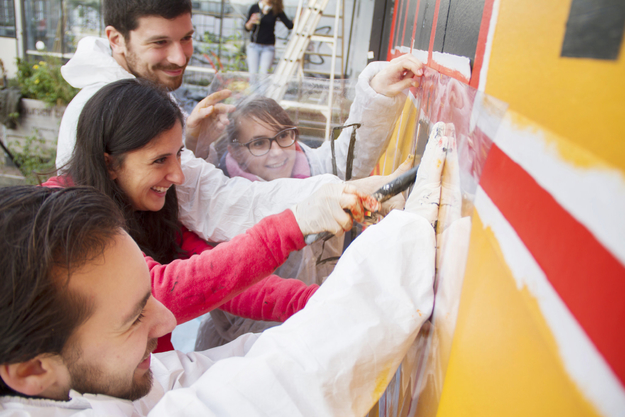Kunstenaar en activist
Bahia Shehab werd een politieke activiste tijdens de Arabische Lente toen ze besloot haar eerdere kunstproject "Duizendmaal NEE" over Arabische kalligrafie om te zetten in graffiti in de straten van Cairo. Vooral iconisch is de "blauwe bh" die Bahia begon te sproeien nadat een vrouw van haar kleren was ontdaan en geslagen door de politie - waarbij ze de blauwe bh eronder blootstelde.
Haar werk bij Mediamatic Biotoop
Om de Prins Claus Prijs te vieren, maakte Bahia een nieuwe muurschildering met een gedicht van Mahmoud Darwish, Palestijns dichter en auteur, in een abstract geometrisch Arabisch lettertype:
"Ooit zullen we zijn wat we willen zijn. De reis is nog niet begonnen en de weg is nog niet geëindigd".
Voortzetting van het onderzoek naar de Arabische Schriftcultuur
De kunstenares zet haar onderzoek naar historische Arabische kalligrafie voort als promovendus aan de Universiteit Leiden, met als doel een encyclopedie van het Arabische schrift te creëren. Ze neemt nu een actieve rol op zich om onze jonge generatie te inspireren door les te geven en te begeleiden aan studenten van de afdeling Kunst van de Amerikaanse Universiteit van Caïro. Daar ontwikkelde ze een ontwerpcurriculum dat zich richt op de Arabische beeldcultuur en het behoud van dit erfgoed in onze moderne wereld, die bijvoorbeeld een gebrek heeft aan diversiteit aan met name Arabische digitale lettertypes. Naast het demonstreren van haar werk, deelde ze haar onderzoek en politieke activiteiten tijdens een artist talk in onze Haeckel Room.
Prins Claus Prijs
Het Prins Claus Fonds eert al 20 jaar visionaire kunstenaars en organisaties voor hun excellente en baanbrekende werk in cultuur en ontwikkeling. Op donderdag 15 december reikte ZKH Prins Constantijn de Prins Claus Prijs 2016 uit aan grafisch ontwerper, kunstenaar, docent en historicus Bahia Shehab.
Informatie
Al-Rihla door Bahia Shehab
Open 24/7
Mediamatic Biotoop, Dijkspark 6, Amsterdam
De muurschildering bevindt zich aan de muur van Mediamatic Biotoop, direct naast de haven en het terras van ons restaurant Mediamatic ETEN.
